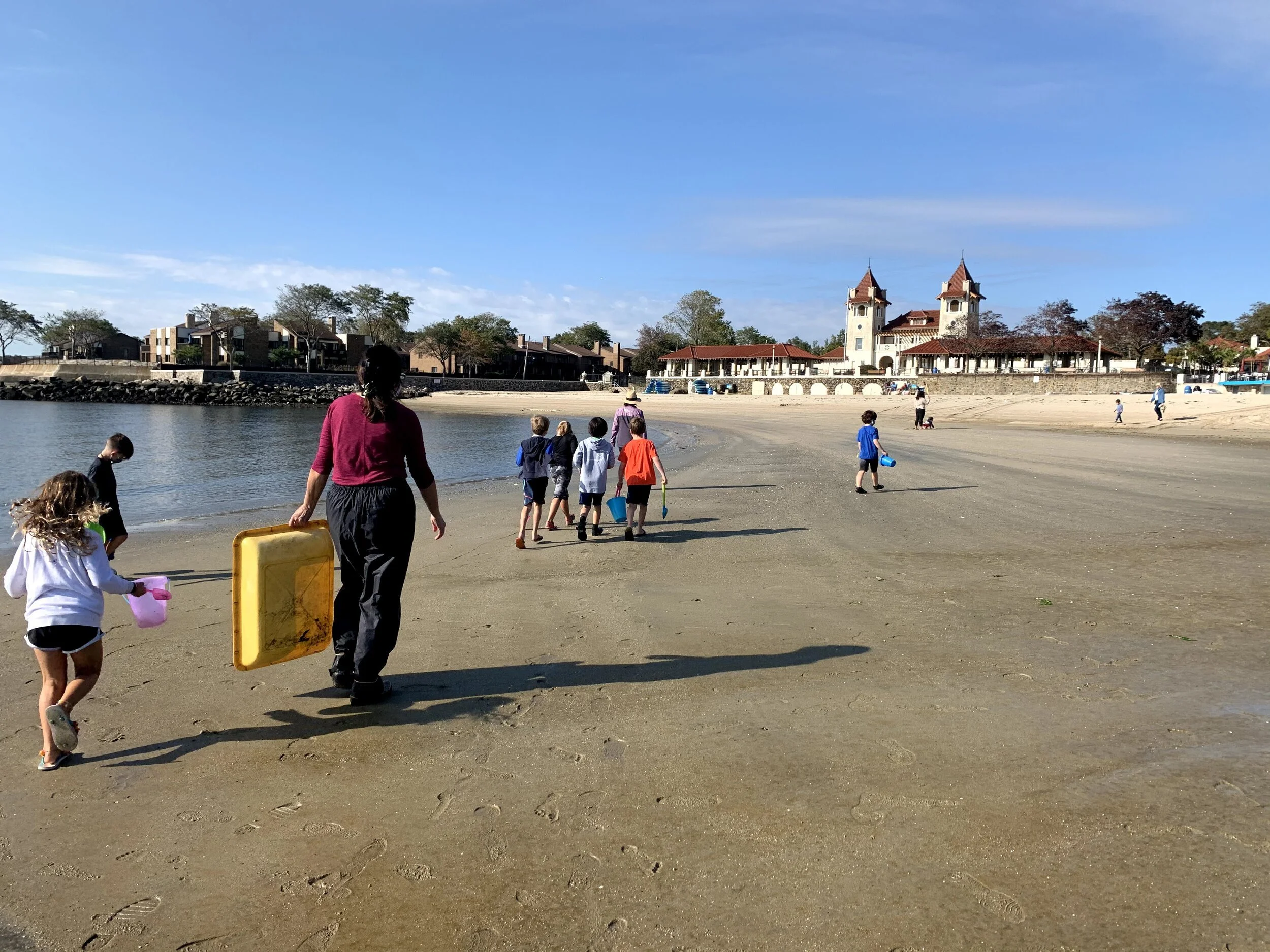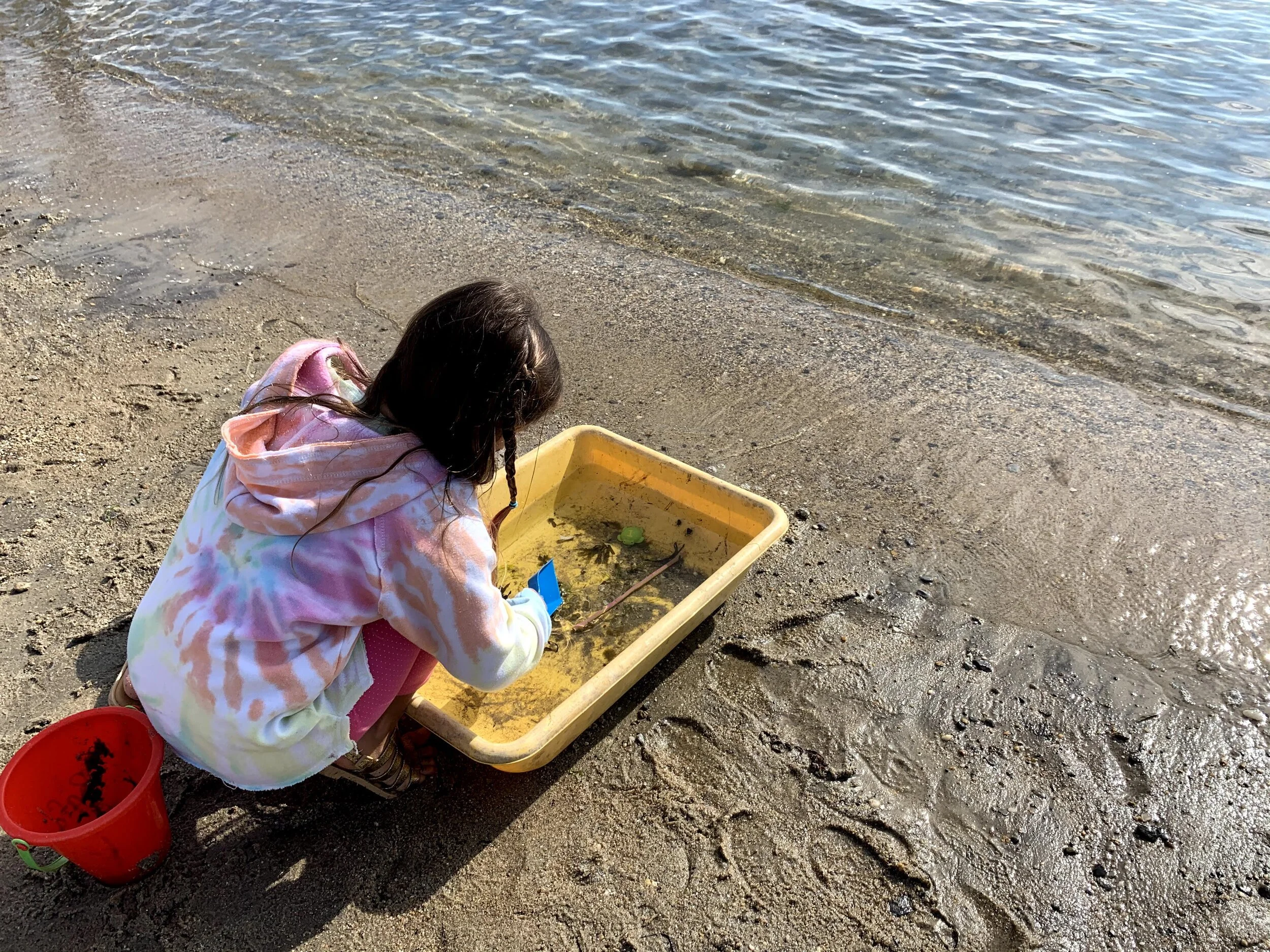A Wonderful Walk in Every Season
—-Mary Gillick, Program Director
If you are looking for an excursion along the shore, Rye Town Park’s Oakland Beach has a beautiful view of the Long Island Sound. Not only can you take in the sounds and sights of the Sound, but you can also explore the tide pools found there. FRNC educators recently provided programs for the Milton Elementary School this October to explore the tide pools. This is a program we offer every year for the second grade students in the fall.
The weather was mild although the water was cooling off. The sand above the high tide mark was soft and clean, making for a comfortable trek. If you venture to the mud flats at low tide (you can check the tides for the date of your visit here), you will find hundreds of mud snails, the cleanup crew for the beach. At times of slack tide, the submerged hermit crabs are easily caught and are tiny enough for a child to hold in their hands. You can also find empty shells and seaweed at the high tide mark if you don’t want to get caught by a wave!
We used a seining net that allowed us to capture some of the swimming creatures, in particular the silverside killifish and the occasional striped bass juvenile. We caught a larger hermit crab that had taken up residence in a moon snail shell. We also found slipper shells, oyster halves, and spirals of moon snails at the high tide mark. In past visits, especially in the spring, we have caught pipefish, fairy shrimp, and the spiky, spider crab.
As the water temperature cools, many denizens of the Sound seek deeper water. Mud snails congregate in the shallows, away from the low tide mark, to avoid freezing. Periwinkle snails stay on the outer rocks under bladder wrack seaweed. The green crabs burrow under the mud until the tide covers their stretch of beach again. Now that we have shifted the clocks back, we transition to the shortest sunlit weeks of the year when nature readies for winter. Luckily for us, the beach offers a wonderful walk in every season.






